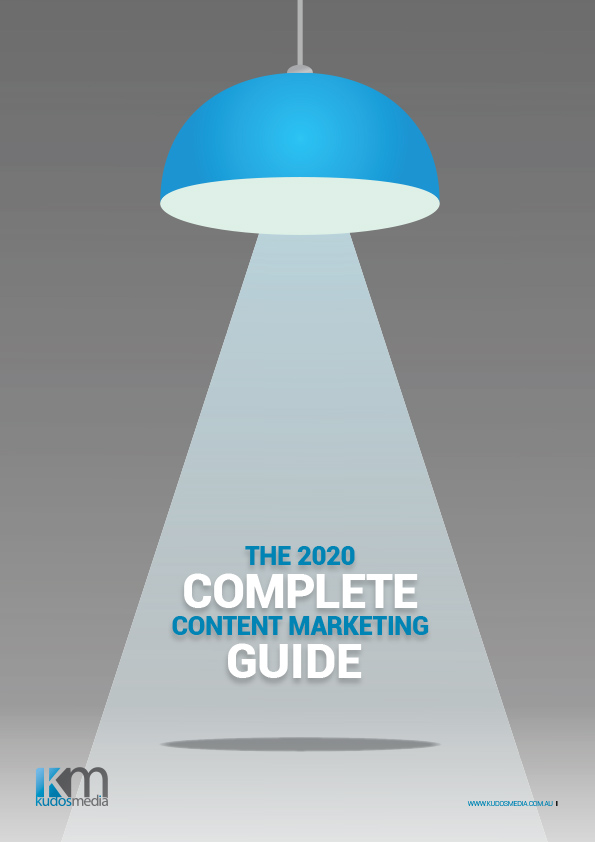Convince the Boss on Content Marketing
 So you’d like to implement, ramp up or refine your content marketing and are planning a topline presentation to gain support at your next marketing meeting.
So you’d like to implement, ramp up or refine your content marketing and are planning a topline presentation to gain support at your next marketing meeting.
Here are some considerations or questions you might hear from your boss.
How will this drive sales?
Content marketing is a highly effective tool for driving sales, although the methods for driving those sales will vary depending on your business model and target market. Ecommerce businesses will have different strategies than a consultative B2B model.
Some examples of how content marketing drives sales include leading people directly to an ecommerce transaction, generating inbound enquiries, capturing data, membership retention and growth, building communities (social media / forums), general branding, market presence and thought leadership or building web presence and traffic with SEO. To effectively drive sales and the conversions that lead to them, you should be tailoring and optimising for specific goals.
Content should be specific to the conversion and created for and delivered/amplified on relevant platforms, reaching people within various phases of their ‘path to purchase’ or ‘conversional funnel’.

For example content driven to new audiences on social media will likely reach people in the Discovery or Awareness phase, while content driven on search engines is more likely to reach people in the Consideration phase (read more on content and the conversion funnel here).
That said, content can also be retargeted on social media to people who added an item to their basket on your website but didn’t check out, or visited the white paper download page on your website without actually downloading. Clearly these people are well into the Consideration phase and resultantly, serving them awareness-based content is less likely to resonate or lead to a sale.
Furthermore, if you publish random ad-hoc content without a specific conversion in mind and just churn something out whenever you have a few minutes to spare, you’re unlikely to lead people down the path to purchase or be creating content for people’s specific location on that path.
How will we measure ROI?
There’s no point in having the greatest content marketing unless you can prove to the boss that’s it’s bringing in revenue.
While it is easier to measure content marketing ROI in an e-commerce environment, all business models should be setting conversion strategies and allocating those conversions monetary values.
For a consultative B2B business, consider how many leads are required to get an appointment and how many appointments are required to get a sale. Then, consider your average sale value and work backwards.
For example, if your average sale value is $10,000 and on average your sales team secures one sale out of every 10 appointments and 10 appointments requires 100 leads, then you need 100 leads to make a sale (you should probably also look into training for your sales team – but the numbers are easy so let’s run with this).
Now say you had a white paper created and email-gated for $5000 and then spent another $5000 to amplify it, generating you 1000 leads from that white paper over its 12-month shelf life.
So, you’ve spent $10,000 to generate 1000 leads at an average cost of $10 per lead and you’ve generated $100,000 worth of sales.
Take out your overheads (say they’re 30% / $30k) and then divide the remaining figure by your 1000 leads ($70,000 / 1000 = $70). So each lead is worth approximately $70, a pretty good ROI on your $10 investment. You should also extract other costs such as wages and expenses to determine how much profit each lead is generating.
Furthermore, this 12-month figure can be pro-rated after the first month so you don’t need to wait a year before presenting your results.
This method can be drilled down to measure the ROI on other conversion goals, such as newsletter signups and even social media follows, as long as you have a clear strategy for converting those followers into owned data.
You should look to automate the process by using Google Analytics Goals to assign a variety of conversions with a monetary value.
How long will it take?
This depends on your starting point, your goals, budget (both content creation and amplification budgets) and the speed at which you wish to build your content pool.
Content marketing is like a hardwood fire, in that it burns much hotter and for far longer than interruptive advertising but if you wait for organic discovery and growth then it will take some time for the fire to rage.
It’s essential that you pile a bit of fuel on your content (in the form of amplification and seeding) to get it burning bright.
As a general rule, we recommend that around 25% of your content creation budget is allocated to amplification, however this may vary depending on if you have existing foundations such as website authority and traffic, an existing database or engaged communities.
Once created, your content will then continue to drive engagement and associated conversions for potentially years to come, or longer, in the case of ‘evergreen content’.
Traditional interruptive advertising on the other is more like a pine wood fire. It may burn quickly and it may burn brightly, but it will quickly fade to obscurity unless you pile on more advertising dollars to drive your message.
Who will manage it?
There is a case for both managing your content marketing in-house and using an agency. If you choose for the in-house option, we recommend whoever manages it does not reside within the existing marketing team.
Marketers will often find it difficult to distance themselves from the commercial imperatives of the product or service they are marketing and messaging risks becoming more ‘advertising’ than ‘content’, which will see engagement suffer.
Your content marketing foundations should be great story-telling for the customer, not great story-telling about the brand.
An agency will tap into those commercial imperatives, without becoming overly attached to them. Agencies also have the benefit of deep existing resources such as journalists, editors, sub editors, designers, developers, SEO specialists and a strong understanding of content marketing from a long history of developing and implementing strategies – which they should be able to convey with proven results.
For more insight into all aspects of content marketing, download KM’s Content Marketing Guide.
DOWNLOAD our Complete Content Marketing Guide
The Complete Content Marketing Guide is a 30-page white paper detailing all aspects of developing, refining and implementing a content marketing and marketing automation strategy.

Content Marketing Strategy Development
Establishing Content Marketing Goals
Audience Analysis
Marketing Automation
Content Metrics and ROI
– Digital Content Distribution:
– Social Media
– SEO
– Video
– E-Newsletters
– Content Seeding and Amplification
Print Content Considerations
Legal considerations




